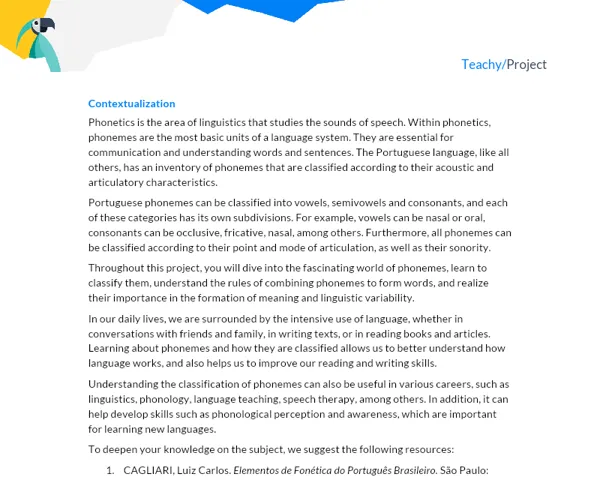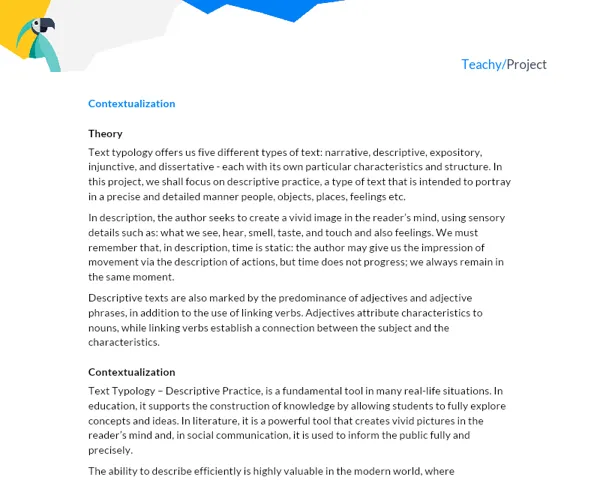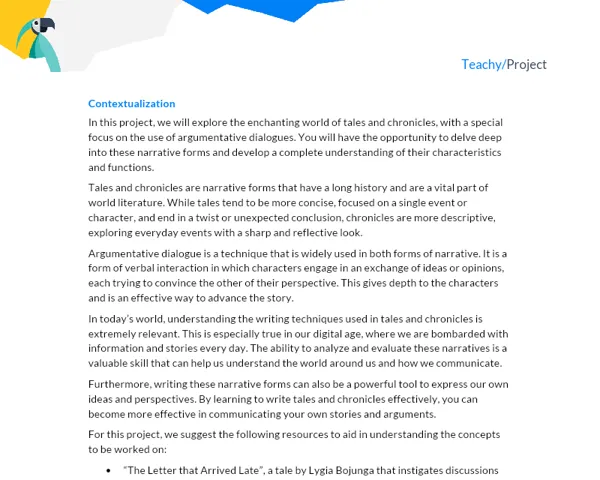Contextualization
Postmodern literature represents a literary movement that began to develop in the mid-20th century, in the period following modernism. This literature is marked by a series of characteristics that break with traditional norms and encompass a wide range of styles, themes, and forms, often challenging the notion of literature as something fixed and immutable.
Some of the most striking characteristics of postmodern literature include the intensive use of intertextuality, narrative fragmentation, and parody. Furthermore, postmodern literature tends to be very self-reflective, with authors often breaking the 'fourth wall' to address the reader directly.
In postmodern literature, there is no single 'truth' or reality; instead, there are many possible, often contradictory realities. This literature challenges the notion that literature should be a faithful reflection of the real world; instead, it can be a way to explore and question reality.
Importance of the Theme
The importance of this literary movement is vast. Postmodern literature has been a vehicle for exploring issues of identity, power, language, and the nature of reality itself. These issues are of paramount importance in the contemporary world as we deal with issues of representation, diversity, and the nature of truth.
Furthermore, postmodern literature has been an influential form of social and political commentary, with authors often using their works to question or criticize the status quo. This makes postmodern literature a valuable tool for understanding the contemporary world and our places in it.
Practical Activity
Activity Title: 'Deconstructing Postmodern Literature: A Literary Mosaic'
Project Objective:
To investigate postmodern literature through the critical reading of representative works, identifying and analyzing its main characteristics.
Detailed Project Description:
Groups should choose a representative work of postmodern literature. Suggestions may include 'Hopscotch' by Julio Cortázar, 'Slaughterhouse-Five' by Kurt Vonnegut, 'On The Road' by Jack Kerouac, among others. Students should read the chosen work and produce a 'literary mosaic,' a set of visual and written materials that portray and analyze different aspects of the work and the postmodern movement. This mosaic should include:
- A written analysis of the main postmodern characteristics present in the work.
- A visual chart representing key aspects of the work (can be a conceptual map, a character map, an infographic, etc).
- A selection of significant quotes from the work that exemplify postmodern characteristics.
- A critical review of the work, reflecting on its meaning and cultural impact.
Required Materials:
- Chosen literary work.
- Writing materials.
- Materials for creating the visual chart (paper, colored pens, glue, scissors, magazines for cutouts, etc).
Detailed Step-by-Step for Activity Execution:
- Form groups of 3 to 5 students and choose a postmodern literary work.
- Read and discuss the work as a group.
- Research the postmodern movement, its characteristics, and representative authors.
- Write an analysis of the work, highlighting the postmodern characteristics present in the text.
- Create a visual chart that represents the work and its postmodern characteristics.
- Select significant quotes from the work that show postmodern characteristics.
- Write a critical review of the work, reflecting on its meaning and cultural impact.
- Compile all parts of the activity to form the 'literary mosaic'.
Project Deliverables:
The final project deliverable will be the 'Literary Mosaic' that must be presented to the teacher and the class. This mosaic should include the written analysis, the visual chart, the selection of quotes, and the critical review.
The written document that complements the practical work is a report that should be organized into the following topics:
-
Introduction: Here, students should contextualize postmodern literature, the chosen work, and the relevance of studying this literary movement.
-
Development: In this section, students should present the analysis of the work, describing the identified postmodern characteristics, presenting the visual chart, discussing the selected quotes, and explaining the critical review conducted.
-
Conclusions: Students should conclude the work by summarizing the main points of the analysis, reflecting on the experience of exploring postmodern literature, and indicating the main conclusions about the work studied and the literary movement.
-
Bibliography: Sources used to build the work should be indicated, including the analyzed literary work, research materials, and any other sources used.



